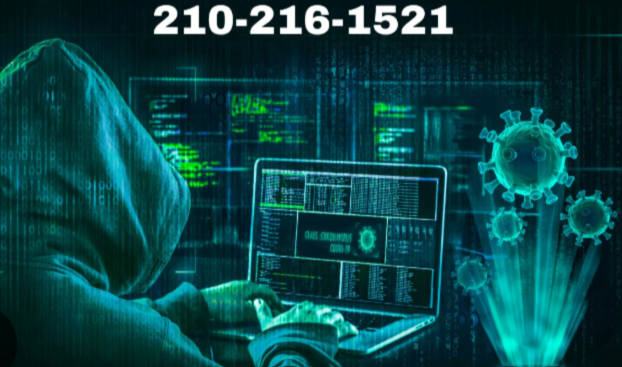In today’s fast-paced digital landscape, understanding and leveraging unique identifiers such as “210-216-1521” is crucial for businesses, tech enthusiasts, and digital marketers alike. This article delves into why such a number is significant and how it impacts various aspects of the digital world.In the ever-evolving digital world, unique identifiers like “210-216-1521” play a pivotal role. They are more than just a series of numbers; they are integral to how we manage data, personalize user experiences, and ensure cybersecurity. This article explores the significance of 210-216-1521 and its influence across various digital domains.
Understanding Unique Identifiers
What is a Unique Identifier?
A unique identifier is a distinct sequence of characters used to identify a particular entity within a digital system. This could be a user, device, or data point. Unique identifiers ensure that each entity is distinguishable from others, which is crucial for effective data management and system operations.
Types of Unique Identifiers in Digital Systems
Unique identifiers come in various forms, including:
- UUIDs (Universally Unique Identifiers): Used in databases and software applications.
- IP Addresses: Identify devices on a network.
- Email Addresses: Identify individual users.
The Role of 210-216-1521
Origin and Definition of 210-216-1521
The number “210-216-1521” is a specific identifier used in certain digital contexts. It may represent a unique code, a device identifier, or a reference number within a system. Understanding its specific application requires context, but its general role is to distinguish one element from another.
Use Cases in Digital Systems
210-216-1521 can be applied in various scenarios, such as:
- Tracking user activities
- Managing data entries
- Facilitating communications between devices
Implications in Data Management
Enhancing Data Accuracy
Unique identifiers like 210-216-1521 ensure that data entries are accurate and specific. This reduces the risk of errors and ensures that each record is uniquely identifiable.
Facilitating Data Retrieval and Organization
By using unique identifiers, data can be efficiently organized and retrieved. This is especially useful in large databases where quick and accurate access to information is crucial.
Impact on Digital Marketing
Personalization and Targeted Marketing
In digital marketing, unique identifiers allow for more personalized content. By tracking user behavior and preferences, businesses can tailor their marketing efforts to individual needs, improving engagement and conversion rates.
Tracking User Behavior and Engagement
Unique identifiers help marketers track how users interact with their content. This data is invaluable for refining strategies and enhancing user experiences.
Cybersecurity and 210-216-1521
Role in Secure Communication
Unique identifiers are essential in secure communication, ensuring that data is sent and received by the intended parties. They help prevent unauthorized access and protect sensitive information.
Preventing Identity Theft and Fraud
By using unique identifiers, systems can better prevent identity theft and fraud. Each identifier is linked to a specific user or device, making it harder for malicious actors to impersonate or access unauthorized information.
Technological Advancements
Innovations and Trends Influencing Unique Identifiers
As technology advances, the methods and applications of unique identifiers evolve. Innovations in cybersecurity, data management, and marketing continually reshape how these identifiers are used.
Future Prospects for 210-216-1521
Looking ahead, unique identifiers like 210-216-1521 will likely become even more integral to digital systems, driven by ongoing advancements in technology and data security.
Case Studies
Real-world Examples of 210-216-1521 Utilization
Examining real-world cases where 210-216-1521 has been used can provide insights into its effectiveness and practical applications. For instance, a company might use such identifiers for managing customer accounts or tracking product inventory.
Lessons Learned from Implementations
These case studies offer valuable lessons on best practices and potential pitfalls, helping others effectively implement and utilize unique identifiers.
Best Practices for Utilizing Unique Identifiers
Ensuring Data Security
To maintain the security of unique identifiers, it’s essential to use encryption and other security measures. Regular audits and updates can help protect against vulnerabilities.
Maintaining Accuracy and Consistency
Consistency in using unique identifiers is key to avoiding errors. Properly managing and updating these identifiers ensures that data remains accurate and reliable.
Challenges and Solutions
Common Issues with Unique Identifiers
Challenges with unique identifiers can include data duplication, security breaches, and system integration issues. Addressing these challenges requires a proactive approach and effective solutions.
Effective Strategies for Overcoming Challenges
Implementing robust security measures, regular audits, and clear protocols can help overcome common issues associated with unique identifiers.
Conclusion
Unique identifiers like 210-216-1521 are fundamental to today’s digital landscape. They enhance data management, drive personalized marketing, and bolster cybersecurity. As technology continues to advance, the role of such identifiers will only grow in importance.
FAQs About 210-216-1521
What is the significance of 210-216-1521?
210-216-1521 serves as a unique identifier in various digital contexts, playing a crucial role in data management, marketing, and cybersecurity.
How does 210-216-1521 enhance data management?
It ensures accuracy and efficient retrieval of data by providing a distinct reference for each entry, reducing the risk of duplication and errors.
What are some practical applications of 210-216-1521?
It can be used for tracking user behavior, managing customer accounts, and ensuring secure communications.
How can businesses ensure the security of unique identifiers?
By employing encryption, regular audits, and robust security measures, businesses can protect unique identifiers from unauthorized access and breaches.
What are the future trends for unique identifiers?
Future trends include advancements in encryption, integration with emerging technologies, and increased emphasis on data privacy and security.

